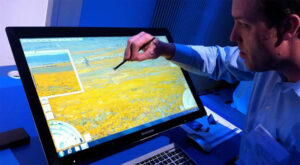
In the ever-evolving landscape of operating systems, Microsoft has been a dominant player for decades. While Windows Center has been the crown jewel of their offerings, there was a time when they ventured into the realm of specialized operating systems. One such endeavor was Windows Media OS, a unique operating system tailored for multimedia experiences. This article takes a journey through the brief history of Windows Media Center and its impact.
Windows Media Center: A Multimedia-Focused Operating System
Development and Launch
Windows Media OS, also known as Windows Media Center Edition, made its debut in 2002. It was an offshoot of the Windows XP operating system and was designed with a specific focus on providing an enhanced multimedia experience for users. This included features like a dedicated media center interface, media player enhancements, and support for TV tuners and remote control devices.
Key Features
- Media Center Interface: The hallmark feature of Windows Media Center was its media center interface. It allowed users to access and organize their digital media, including music, videos, photos, and recorded TV shows, through a user-friendly and visually appealing interface.
- TV Tuner Support: Windows Media Center was among the first operating systems to provide built-in support for TV tuners. Users could connect a TV tuner card to their PC and watch, record, and time-shift TV shows.
- Remote Control Integration: To complete the home theater experience, Windows Media Center supported remote control devices. Users could navigate through media content and control their PC from a distance.
- DVD Playback: The operating system included DVD playback functionality, a significant feature in the early 2000s when DVDs were a popular entertainment medium.
- Extensibility: Windows Media Center allowed third-party developers to create plugins and extensions to enhance the media center experience.
The Decline of Windows Media Center
While Windows Media Center had several compelling features, it faced several challenges that ultimately led to its decline.
- Limited Hardware Support: Windows Media Center required specific hardware components, such as TV tuner cards, to unlock its full potential. This limited its adoption, as not all users had the necessary hardware.
- Niche Market: The operating system was designed for a niche market of home theater enthusiasts, and it did not gain widespread popularity.
- Successor Operating Systems: With the release of Windows Vista, Microsoft introduced Windows Media Center as part of the Windows Vista Home Premium and Ultimate editions. This marked the transition of media center features into the mainline Windows Center, rendering the standalone Windows Media Center obsolete.
- Evolution of Streaming Services: The rise of online streaming services and digital media consumption platforms made traditional media center operating systems less relevant.
Conclusion
Windows Media Center, although a short-lived endeavor, represented a unique chapter in the evolution of operating systems. It was a pioneering effort to create a dedicated multimedia-focused Center, designed for users who wanted a comprehensive home theater experience. However, as technology evolved and media consumption habits changed, Windows Media OS was gradually phased out in favor of more versatile and integrated solutions within mainstream Windows operating systems.
The legacy of Windows Media Center lives on in the memories of those who explored its multimedia features and in the broader history of specialized operating systems that aimed to cater to specific user needs. Today, the focus has shifted towards more comprehensive and connected solutions that offer media experiences across a wide range of devices and platforms.



